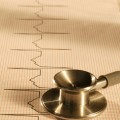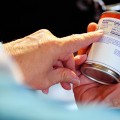Lowering Heart Disease Risk
Did you know that heart disease is the number 1 killer of Americans today? In 2010, according to the American Heart Association, there were almost 18 million adults with heart disease!
About 1 in 3 people over the age of 35 will die because of heart problems. In addition, experts think that about 50% of adults in the US have at least one risk factor for heart disease. This means that there is a pretty good chance that you or someone you know could be at risk for, or already have, a serious heart problem.
These facts are scary, but they are true. The good news, however, is that you can lower your risk for heart disease. Changing just a few key habits can help you get healthy, feel better, and live longer!
What exactly is heart disease?
“Heart disease” is a general term that healthcare providers use to refer to damage to blood vessels in your body, especially in your heart and brain.
Blood vessels can be damaged by health problems such as high blood pressure and diabetes, and habits like smoking. This damage can lead to scars and swelling inside blood vessels that make them narrow, which means less blood can pass through them.
In addition, having high cholesterol can lead to buildup of waxy plaques, made of fats and calcium, inside blood vessels. Plaque buildup can make blood vessels even narrower. Sometimes, these plaques break open. When this happens, a blood clot can form inside blood vessels, blocking the flow of blood downstream from the clot.
When tissues or organs can’t get blood, which delivers oxygen and important nutrients, they start to die. If this happens in the brain it is called a “stroke.” If it happens in the heart, it is called a “heart attack.”
What can you do to lower your risk?
According to heart doctors, there are three lifestyle habits that are key to having a healthy heart:
- Make exercise part of your daily routine. Experts say that you should get at least 150 minutes of exercise each week—that’s 30 minutes of activity, 5 days a week. If you can’t do 30 minutes all at once, it’s okay to break it up into three 10-minute sessions. You don’t have to join a gym to get exercise—brisk walking, doing housework or gardening, riding a bike, or going dancing are all good for your heart.
- Eat a healthy diet. This includes eating plenty of fresh fruits and vegetables (at least 5 servings of each a day), lean proteins, whole grains, and healthy fats (avocados, walnuts, olive oil, and fish like salmon and mackerel). It also means only eating small amounts of desserts, fast food, and sugary drinks like soda and energy drinks. Healthy eating can help lower you cholesterol, blood pressure, and diabetes risk.
- If you smoke, it’s time to quit. Smoking is one of the worst things you can do for your health—smoking can take about 7 years off your life, on average. If you have heart disease and you smoke, you could die 15 years sooner than you would if you didn’t smoke. Quitting isn’t easy, and it takes some people a few tries before it sticks, but don’t give up; you can do it! Tell your healthcare provider that you want to quit so they can talk to you about different stop-smoking aids that are out there. These include nicotine gums and patches, support groups and counselors, and medicines.
The take home message
Heart disease is very common, and it can be deadly. The good news is that you can make simple changes in your life to lower your risk. Eat healthy, move more, and quit smoking—these are the top 3 changes heart experts say are best for keeping your heart and blood vessels happy. Many of the health benefits begin just a few weeks or months after making these changes. So don’t delay—get started down the path to a happy, healthy heart today!












